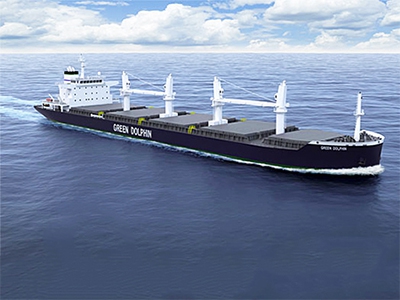Ensuring that the actual ship delivered is as good as its design
DNV GL has launched a new service named Build2Design to help shipyards and shipowners improve the fuel economy of their ships by reducing variations in their building process.
Significant improvements have been achieved in the design of more fuel-efficient ships in recent years. The performance of these Eco-Ship designs has been documented by both Computational Fluid Dynamics (CFD) and tank testing and some designs have also proven their performance in operation. However, questions have been raised about variations in performance and research has now shown a wide variation in different ships of the same design.
“We have compiled data that shows there is a large variation in fuel consumption between ships of the same design. This has led us to develop a new service, Build2Design, which aims at ensuring that the actual ship delivered is as good as its design,” says Michael Aasland, Business Director for Bulk Carriers at DNV GL.
Dr Olav Rognebakke, Head of Hydrodynamics at DNV GL, adds: “Build2Design is based on a solid theoretical foundation combined with the latest technology and uses advanced CFD calculations to identify the parameters that affect fuel consumption and the effect of each individual parameter.“
In developing the new service, DNV GL undertook a sensitivity analysis of over twenty parameters and considered both the complexity of addressing the parameter and the impact on fuel consumption of each parameter. The project’s results also show that the selection of the parameters will be design specific, since the flow around the ship hull varies from design to design.
“We have taken a cost/benefit approach when selecting the parameters so that the shipowner obtains the maximum benefit with the minimum impact on the shipyard,” says Mr Aasland. “Just one of the parameters we are considering is the positioning and alignment of the bilge keel. Advanced CFD calculations show that a 0.5% reduction in resistance can be achieved by adjusting the position and angle,” he adds.
From the first pilot project carried out on the Green Dolphin 38 design, a conservative estimate shows that a saving of 2% can be achieved, which equates to 80 tonnes of fuel/year and a saving of USD 50,000/year. Corresponding figures for a typical Capesize bulk carrier are 200 tonnes of fuel/year and a saving of USD 120,000/year.
The new service is being rolled out this spring, both through the Green Dolphin 38 pilot project for Goldenport at CSI Jiangsu and the first commercial project based on a Seahorse 35 design for Graig Shipping at Jiangdong SY.
“Today, hull lines are optimised with much greater sophistication than only a few years ago,” says Mr Aasland. “DNV GL’s Build2Design service ensures that both yards and shipowners benefit from the latest research and best practices.“
Source and Image Credit: DNV GL
Also read the following articles:






























































